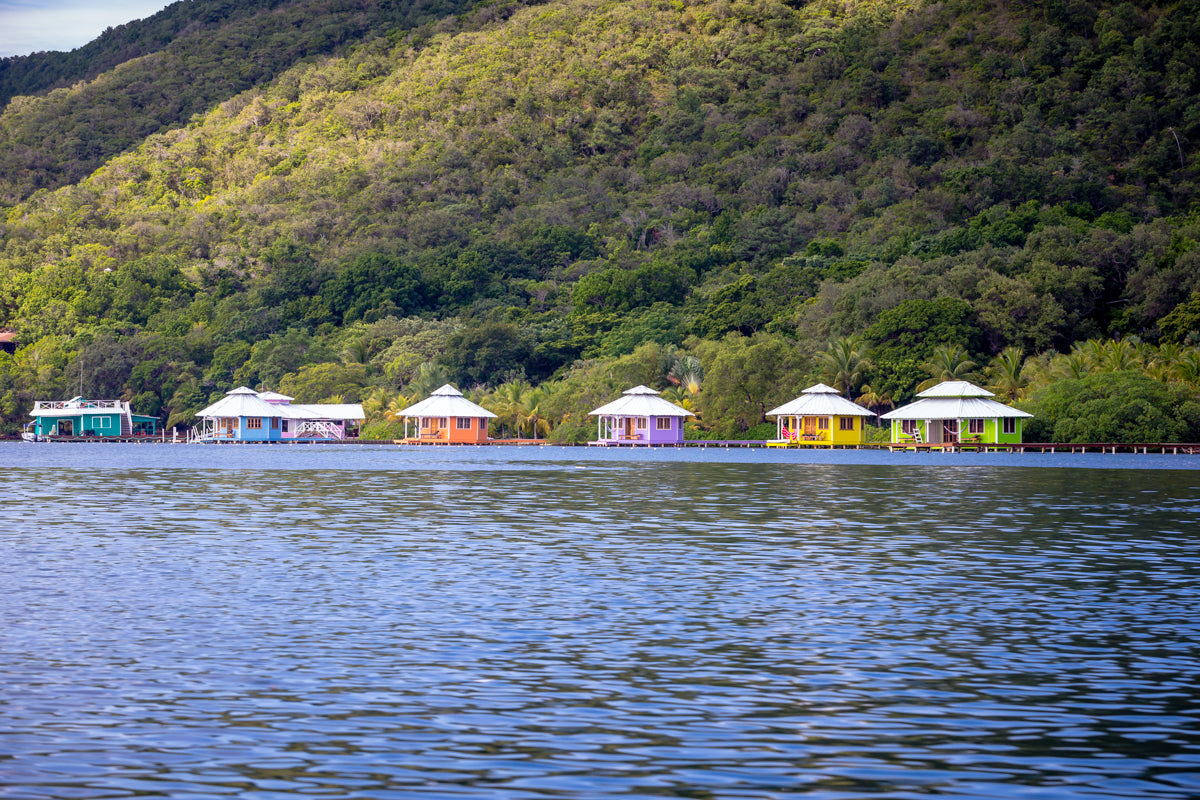When you think of Honduras, generally speaking, fly fishing is not the first thing to come to mind. However, that’s changing as more and more anglers experience terrific fishing. The country itself is breathtakingly beautiful and the government goes to appropriate lengths to protect that beauty with biosphere reserves, national parks, and wildlife refuges. The natural treasures don’t stop at the mainland though - just off the northern coast of Honduras lies the Bay Islands, the crown jewel of Honduras fly fishing.
The Bay Islands of Roatán, Guanaja, and Útila sit at the southern end of the Mesoamerican Barrier Reef and are surrounded by crystal clear turquoise waters. These waters are teeming with marine life with vibrant coral, massive sponges, multicolored fish, and wildlife such as manta rays, sea turtles, whale sharks, and of course a smorgasbord of fish species.
Fly fishing the Bay Islands of Honduras means stepping into a remote fishery and fishes as one would expect it to. If you enjoy fishing in a remote and secluded setting paired with terrific fishing then you’ll love fishing in Honduras.

The reason most people travel to fly fish in the Bay Islands is for the large number of bonefish and permit. Although tarpon are found occasionally, it’s not the norm, and finding them shouldn’t be expected. The large population of bonefish and schools of tailing permit quickly make up for the few tarpon an angler will see during their trip. Also, the ability to wade fish for permit throughout these fisheries is a highlight. Bonefish that are found in Honduras are generally similar in size to their Belize and Mexico counterparts.

But don’t be fooled! The bonefish of Honduras still spook just as easily as any other bonefish one would cast to throughout the Caribbean. Anglers are able to target bonefish throughout the year and usually range in size between two and four pounds. What makes bonefishing in Honduras so unique is the rolling hills of lush, tropical flora. Red and black mangrove trees form an entanglement of roots for fish to seek safety during high tide. A mixture of mahogany, pine, and palm trees combined with thick undergrowth create a rich and humid tropical environment suitable for sustaining Honduras' largest export -- coffee. It's less like fishing in a destination such as The Bahamas, and more like fishing in places such as New Caledonia or parts of Hawaii and the West Indies. The bonefish angler used to fishing the flats, vast lands of the Keys or the many Bahamian islands will be in awe.

If you’re trying to catch your first permit or have a healthy permit addiction then Honduras is a great option. There are few places in the world of saltwater fly fishing that has consistent permit fishing like the Bay Islands. It is not uncommon to see numerous permit each day and have great shots both from the boat and while wading. Besides, Honduras is located just south of what is currently considered the permit capital of the world, Belize. The shallow coral and turtle grass flats offer the perfect environment for hungry permit in search of food.
One can walk/wade the flats slowly and be on alert for dark shadows or permit fins breaking the surface. If you see one, which most likely you will, grab your rod and place a cast on the path of the fish. A shrimp or crab pattern is recommended. It’s suggested to use a 9 or 10-weight rod for permit as they average 8 to 12 pounds and larger ones over thirty pounds can also be found. Even though tarpon is not readily found, they are occasionally targeted during certain times of the year.

Pack a 9 or 10-weight rod for your trip as tarpon averages 15 to 30 pounds. Aside from bonefish, permit, and tarpon, numerous other flats species are also found.
Even though most people want to chase the big three flats species, some other equally as fun but underrated fish include several species of jacks, barracuda, and triggerfish. Pack an extra rod that you can have rigged for barracuda or other species. You never know what you’ll see on the flats and being prepared could be the difference between you landing a trophy jack or not.

Getting There
Getting to Honduras is not as difficult as it is time-consuming. With a handful of flights out of major U.S. airports, getting to Honduras is simple. Once you land at the mainland airport you’ll board a smaller plane that will take you to the Bay Islands. You can fly direct to Roatan now from quite a few major US hubs. And for operations like Mango Creek Lodge, once you land on the island you’ll take a small transfer boat straight to the lodge.

Lodges in Honduras
Yellow Dog works with three different lodges/outfitters in Honduras: Mango Creek Lodge, Faraway Cayes and Fly Fish Guanaja. All three are exceptional operations with a team of professional guides that know the water inside and out and offer comfortable intimate accommodations. Ready to explore Honduras? Contact us today to start planning your trip.



























